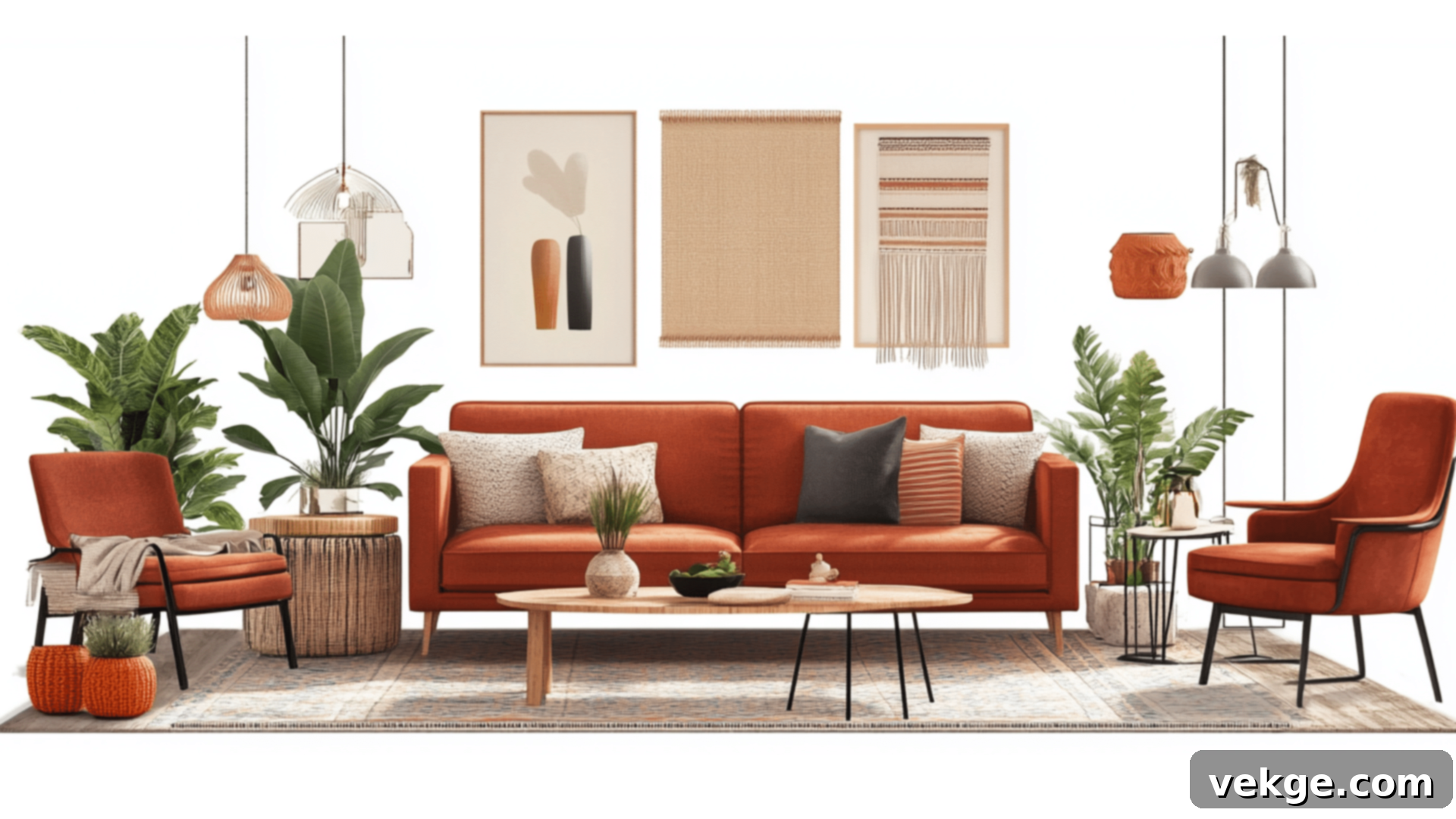Mastering Asymmetrical Balance in Interior Design: Create Dynamic & Harmonious Spaces
Are you tired of your home feeling predictable or just a little… boring? If your spaces lack that distinctive spark and personalized touch, asymmetrical balance in interior design might be the refreshing answer you’ve been searching for. Far from chaotic, this sophisticated approach uses different elements that, despite not being identical, work together to create a cohesive, visually appealing, and wonderfully lived-in aesthetic.
Unlike the traditional method of mirroring items on both sides of a room—which often results in a formal or stiff atmosphere—asymmetrical balance embraces variety. It’s about distributing visual weight evenly without relying on exact duplication. This style champions individuality, allowing you to mix and match pieces, textures, and colors to craft an environment that truly reflects your personality and lifestyle.
In this comprehensive guide, we will delve deep into the world of asymmetrical balance. We’ll explore its fundamental principles, uncover the myriad reasons why it’s such an effective design strategy, and provide you with actionable, simple ways to implement it in your own home. You’ll learn how to artfully combine furniture, strategically use color and texture, and select decorations to transform your rooms into inviting spaces that feel both relaxed and profoundly interesting. Get ready to discover how this dynamic design philosophy can elevate your interiors and make your space feel more authentically ‘you’.
What is Asymmetrical Balance in Interior Design?
At its core, asymmetrical balance in interior design is an arrangement technique where elements in a room are distributed to achieve equilibrium, but without mirroring each other. Imagine a seesaw where different weights are placed at varying distances from the fulcrum to achieve balance; similarly, asymmetrical design uses objects of different sizes, shapes, and textures, placed at different points, to achieve visual harmony. It’s a deliberate departure from symmetrical balance, where identical items are evenly matched on both sides of a central axis, creating a formal and often predictable appearance.
This dynamic approach creates a more comfortable, organic, and lived-in feel, making spaces look dynamic and natural rather than rigid or overly staged. Instead of relying on exact replicas, asymmetrical balance focuses on the perceived visual weight of objects. A large, dark piece of furniture on one side might be balanced by a group of smaller, lighter objects, a tall plant, or a vibrant piece of art on the other. The goal is to create a sense of equilibrium where no single area feels heavier or lighter than another, inviting the eye to move fluidly across the room and discover new points of interest.
Benefits of Using Asymmetry in Design
Embracing asymmetry offers a wealth of advantages, transforming mundane rooms into captivating and personalized sanctuaries:
-
Enhanced Visual Interest and Dynamism
Asymmetry immediately adds visual interest by moving away from predictable matching pieces. This creates a more engaging and stimulating environment, compelling the eye to scan the room and explore its various components. The absence of strict repetition means there’s always something new to discover, preventing the space from feeling static or monotonous.
-
Creates a Relaxed, Curated, and Inviting Atmosphere
By shunning strict formality, asymmetry helps create a relaxed, curated, and inviting look. Rooms designed with asymmetrical balance often feel more comfortable and approachable, as if each piece has been thoughtfully selected and placed over time, rather than bought as a matching set. This effortless charm fosters a welcoming ambiance where guests and residents alike can feel at ease.
-
Perfect for Modern and Eclectic Styles
Asymmetry works particularly well in modern, contemporary, and eclectic interior design styles. These aesthetics often celebrate variety in shapes, sizes, textures, and cultural influences. Asymmetrical arrangements perfectly complement such designs, allowing disparate elements to coexist harmoniously and tell a unique story. It’s the ideal framework for showcasing a collection of unique finds or blending different periods and styles.
-
Unleashes Creativity and Personalization
This approach allows for immense creativity in arranging furniture and decor, making spaces feel deeply personalized. Without the constraint of matching, designers and homeowners are free to experiment with diverse pieces, expressing their individual taste and flair. It’s an opportunity to break free from conventional rules and infuse your personal narrative into every corner of your home, resulting in a space that truly resonates with you.
-
Achieves Effortless Balance and Flow
By choosing mismatched pieces that complement each other through shared color palettes, textures, or overarching themes, asymmetry can bring an effortless balance to any room. This method ensures that the atmosphere remains fresh, intriguing, and dynamic without appearing haphazard. It fosters a natural flow within the space, guiding the eye smoothly from one area to another, contributing to an overall sense of calm and collected style.
Ways to Achieve Asymmetrical Balance
Achieving asymmetrical balance is an art, not a science, but there are proven techniques designers recommend to create a balanced yet uniquely dynamic space. These ideas will help you understand how to use furniture, shape, color, and other elements in unique and impactful ways.
1. Use Contrast Instead of Mirror-Images
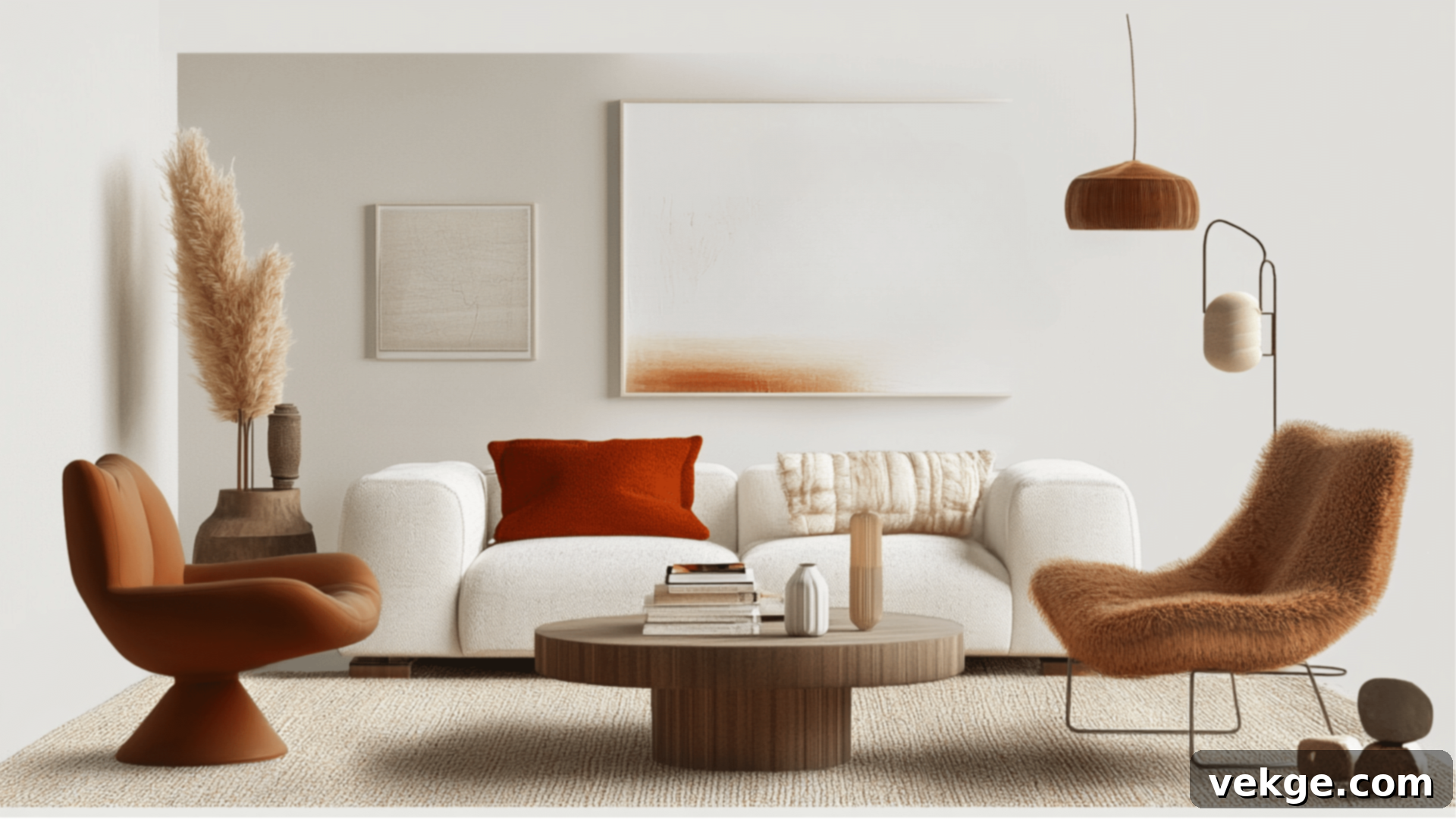
The fundamental principle of asymmetrical balance is to avoid exact duplication. Instead of identical decor, try using mismatched furniture that still possesses a similar visual weight or aesthetic connection. For example, pair a plush, deep armchair on one side of a sofa with two lighter, perhaps more upright accent chairs or a sleek chaise lounge on the other. While they aren’t identical, their combined visual presence creates equilibrium. Avoid the common pitfall of buying “sets” of matching items, as this can lead to a predictable, often too formal, and ultimately less interesting space. Focus on harmonious contrast rather than perfect symmetry to achieve a more engaging and personalized look.
2. Play With Shape and Silhouette
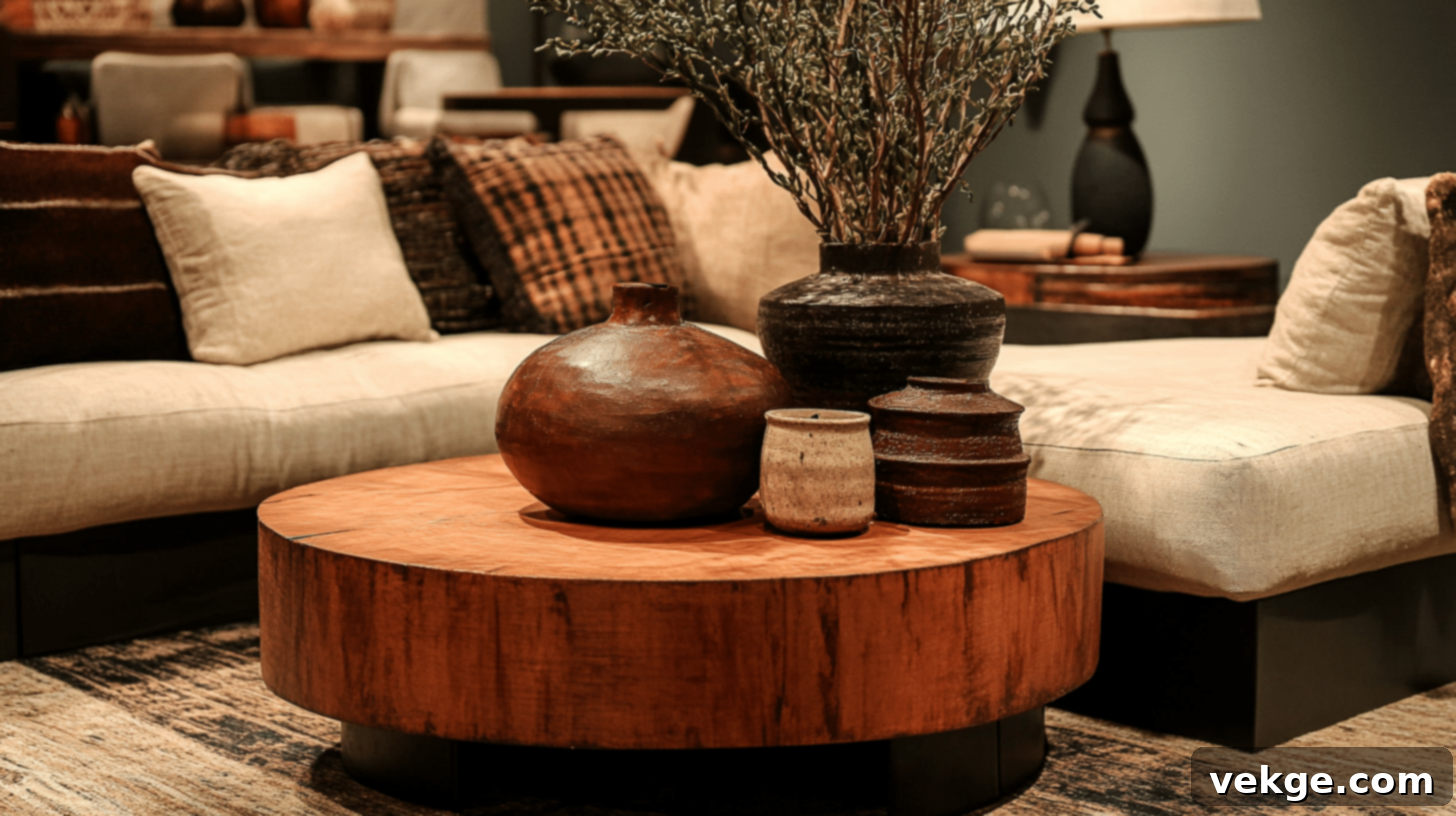
Mixing different shapes and silhouettes is an excellent way to introduce asymmetry and dynamism. Combine curved pieces with angular ones to create a captivating interplay of forms. For instance, you might pair a soft, round coffee table with a more structured, square side table. Introducing organic shapes, like a uniquely shaped sculpture or a flowing plant, alongside geometric furniture, can also create an interesting visual dialogue. Furthermore, contrasting materials, such as combining a warm, rough-hewn wooden console with sleek, reflective metal accents, adds another layer of depth and unexpected yet balanced appeal. This variation prevents a room from feeling flat and adds complexity.
3. Use Color and Texture to Tie it All Together
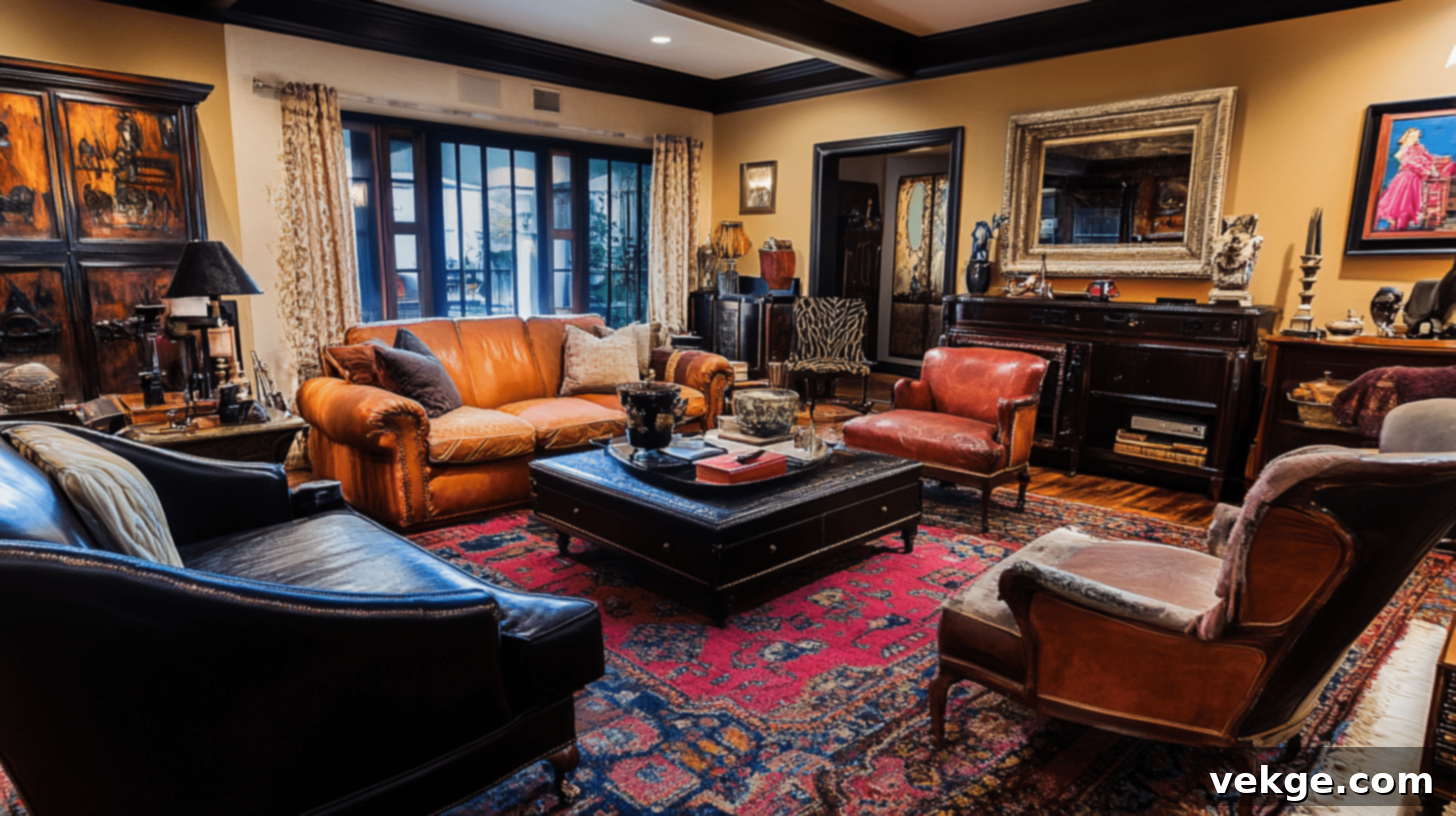
Even when individual elements are mismatched, a cohesive color palette or recurring textures are vital for making them feel connected and part of a unified whole. Using a consistent color scheme, perhaps repeating specific hues or complementary shades throughout a room, can effectively balance otherwise contrasting furniture and accessories. Similarly, integrating various textures—from smooth metals and glass to rough woods, soft velvets, and chunky knits—creates tactile interest. However, ensure these textures are balanced. For example, a sleek modern sofa can be anchored by a textured rug and soft throw pillows. Repeating a dominant finish, like matte black or a warm tan, across different items can also serve as a subtle visual thread, bringing disparate elements into harmonious alignment.
4. Embrace Odd Numbers

Designers often refer to the “rule of three” or “rule of five,” as odd numbers naturally tend to create more dynamic and visually interesting groupings than even numbers. For instance, arranging five chairs around a dining table or displaying three pieces of art on a wall feels more active and less static than an even arrangement. This principle extends to smaller decorative items too; grouping accessories and lighting fixtures in odd numbers adds inherent interest and movement while still maintaining a sense of balance. An asymmetrical arrangement of three vases of varying heights, or a cluster of five candles, creates a focal point that draws the eye without appearing rigid or overly formal. Odd numbers feel more natural and less forced, contributing to that desired curated look.
5. Work With Height Differences
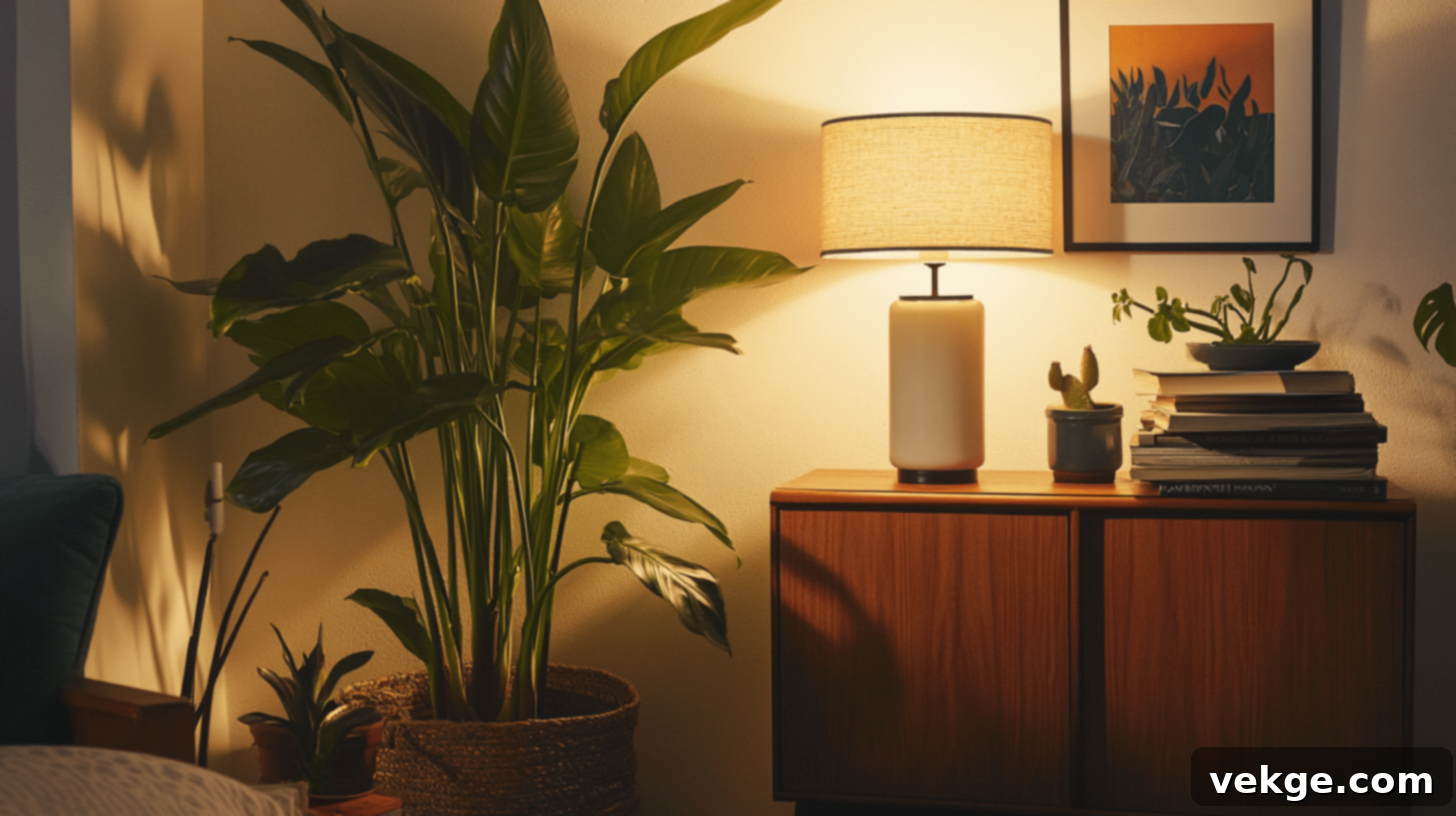
Varying heights is a powerful tool in asymmetrical design, as it helps guide the eye through the room and adds vertical interest. Incorporate tall elements like towering plants, vertically stacked artwork, or elegant floor lamps to create visual anchors and draw the gaze upwards. Conversely, low-slung furniture balanced by taller pieces prevents the room from feeling too heavy or too sparse at different levels. Layering varying heights in your decor—such as placing a tall vase next to a medium-sized sculpture and a low stack of books—keeps the space visually engaging and dynamic without overwhelming it. This technique adds depth and dimension, preventing a flat, one-dimensional appearance.
6. Counterbalance With Visual Weight
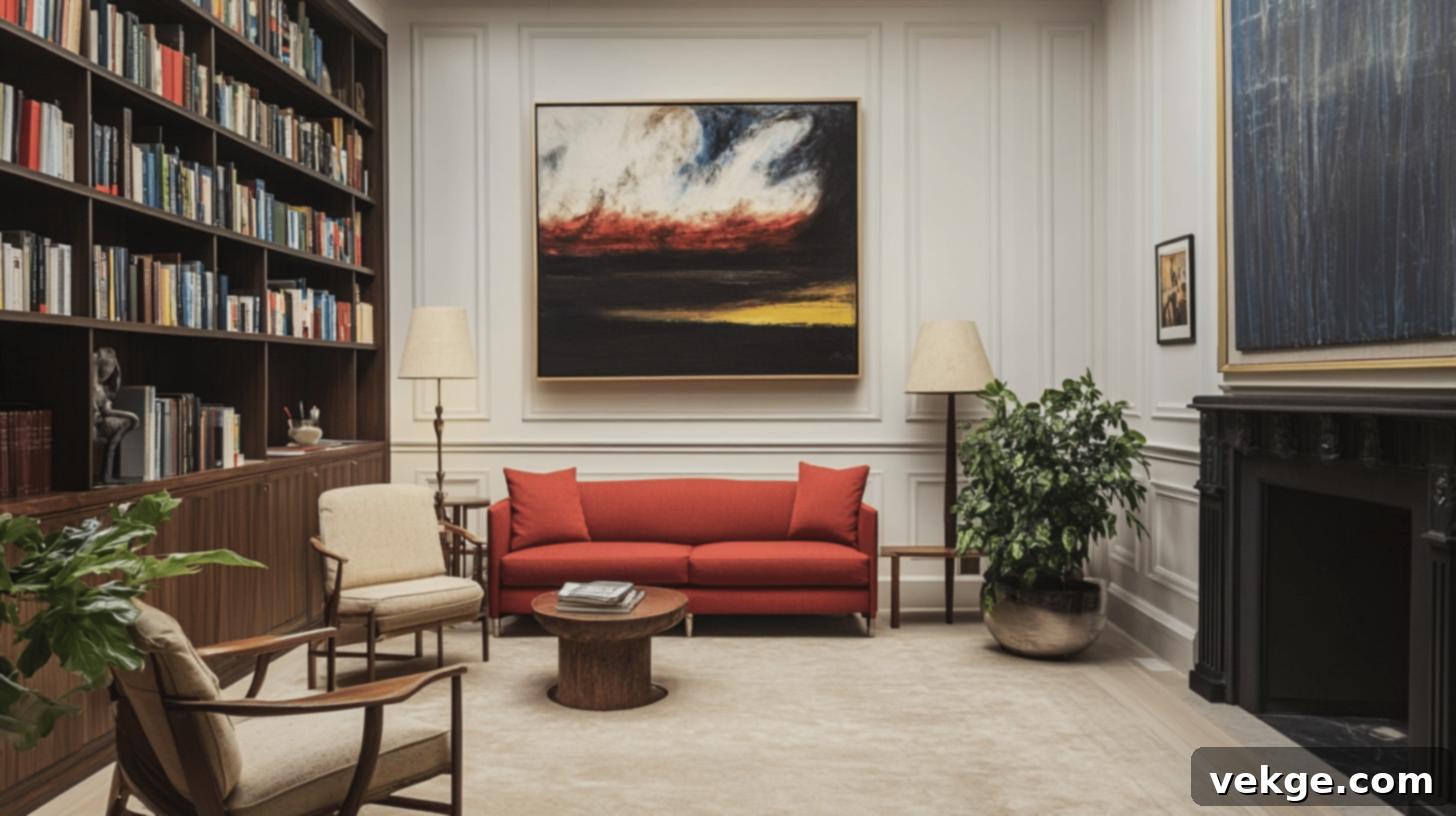
Understanding and manipulating visual weight is perhaps the most crucial aspect of achieving harmony in asymmetrical design. Visual weight refers to how much an object “demands attention” based on its size, color, texture, density, or material. Balancing this visual weight in a room helps create harmony without relying on physical symmetry. For example, a large, dark, or heavily textured bookcase or a bold, expansive piece of artwork can act as a significant visual anchor on one side of a room. This substantial element can then be effectively counterbalanced by a collection of lighter, perhaps smaller, or more sparsely arranged items on the opposing side, such as a delicate console table adorned with a few bright accessories, a cluster of framed photos, or a tall, slender floor lamp. This approach creates a sense of equilibrium and maintains flow and functionality without needing identical elements.
Asymmetrical Interior Design in Different Rooms
Let’s explore how these principles can be applied to specific areas within your home, transforming them into inviting and aesthetically rich spaces.
Living Room

In the living room, often the heart of the home, asymmetrical balance can create an atmosphere that is both sophisticated and incredibly comfortable. Start by centering your main sofa. Instead of placing matching end tables and lamps on either side, pair it with different chairs—perhaps a substantial armchair on one side and a lighter, perhaps even a pair of smaller, more sculptural accent chairs on the other. Mismatched side tables, unified by a common material, color, or style theme, can also add charm without disrupting the visual flow, creating a cozy yet dynamic conversational area. Incorporate varied heights with floor lamps, tall plants, or a gallery wall featuring an uneven arrangement of artwork. A large, abstract rug can define the space while allowing furniture to be placed off-center, contributing to an inviting and effortlessly styled atmosphere.
Bedroom
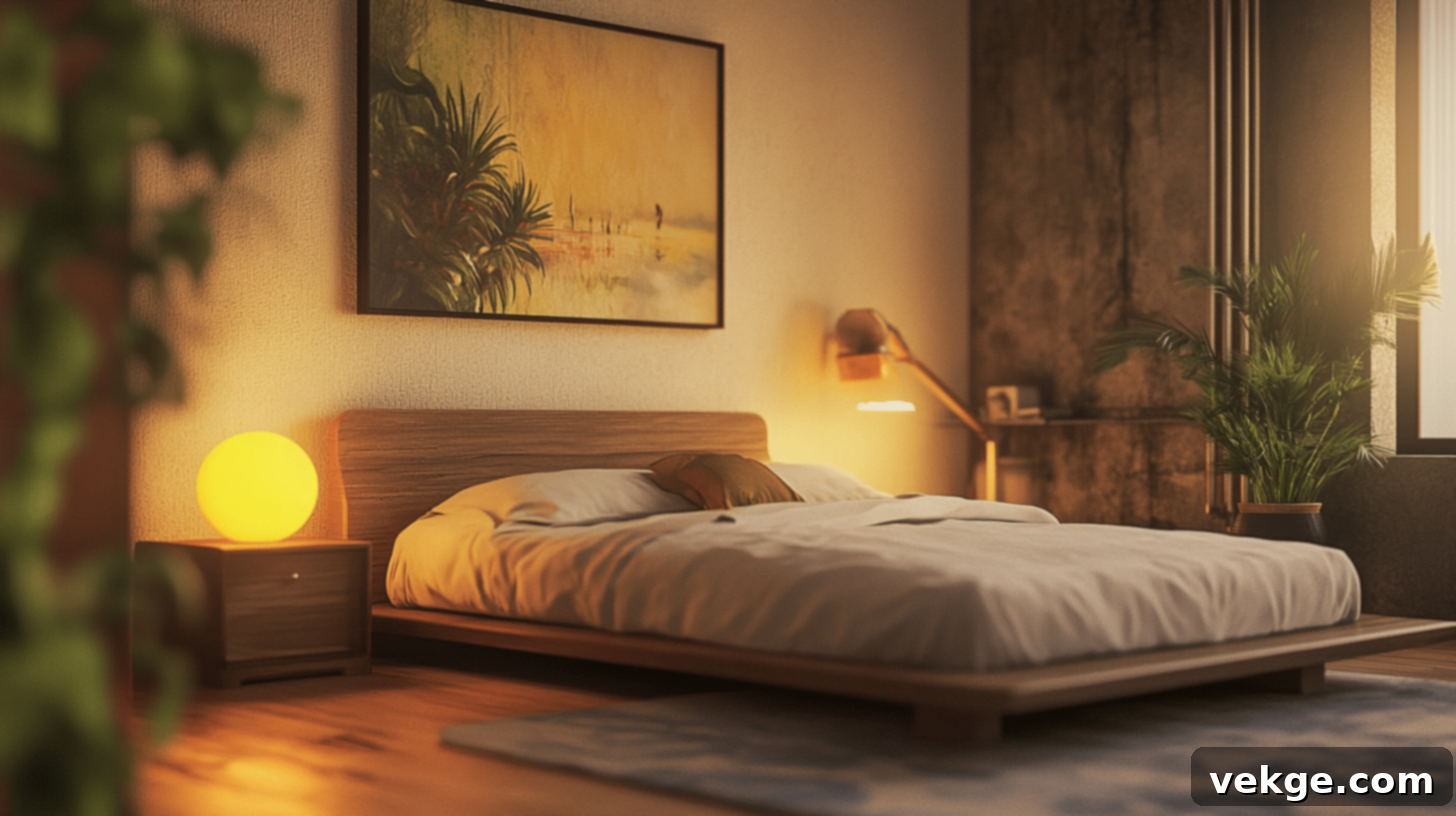
For the bedroom, where tranquility is key, asymmetrical balance can prevent a sterile feel while maintaining serenity. Instead of matching nightstands and lamps, try a robust nightstand and a classic table lamp combo on one side of the bed. On the other side, you could place a lighter, floating shelf, a small stool, or even a large, framed piece of wall art that provides a similar visual weight to the lamp on the other side. A tall, slender plant or a statement floor lamp can introduce vertical interest, balancing the horizontal lines of the bed. The balance here comes from the variety of elements, ensuring functionality without rigid conformity, thereby keeping the space connected, personal, and conducive to relaxation.
Entryway
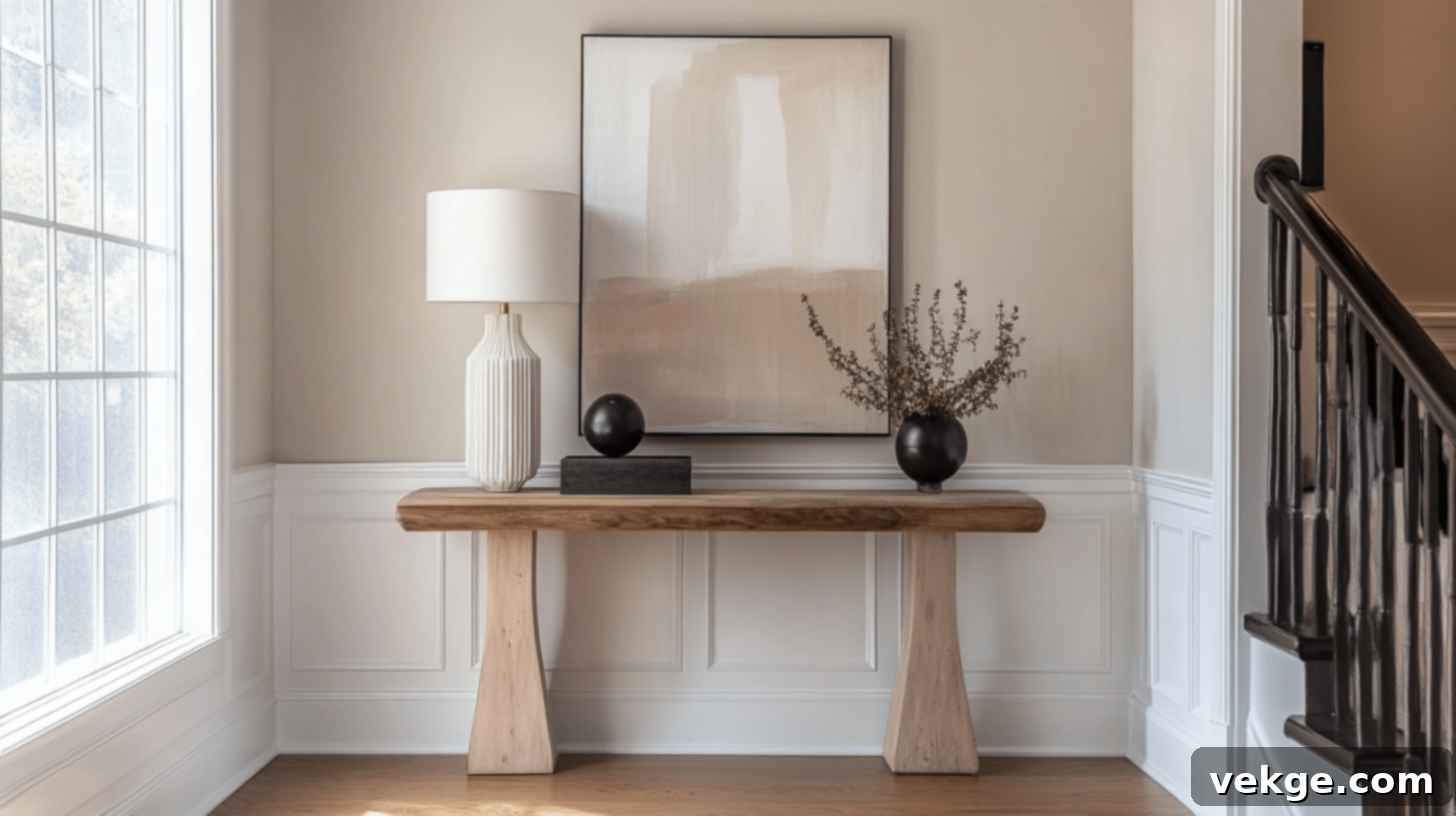
The entryway is the first impression of your home, and asymmetrical design can make it immediately captivating and welcoming. For a console table, instead of placing identical lamps or decor on either side, arrange uneven accessories. You might have a large, striking mirror or a gallery of smaller frames off-center above the console, balanced by a tall vase with fresh flowers and a stack of art books on one side of the table. On the other, a small decorative bowl for keys and a single, unique sculpture can provide visual interest without overcrowding. The key to balancing this space lies in effectively using visual weight and negative space, ensuring the area feels open, inviting, and grounded rather than cluttered or haphazard. Consider a small bench on one side, balanced by a tall coat rack or a striking piece of wall art on the other, for both form and function.
Mistakes to Avoid while Creating Asymmetry
While asymmetrical balance offers immense freedom, it’s easy to veer into disarray if not approached thoughtfully. Here are common mistakes to watch out for to ensure your design remains cohesive and inviting:
- Going too random without visual anchors: Without a unifying theme, consistent color palette, or prominent focal point, an asymmetrical room can quickly devolve into visual chaos. Always ensure there’s an underlying connection or a central element that ties everything together.
- Using too many clashing colors or textures: While variety is encouraged, an excessive mix of wildly different colors and textures without any common ground can overwhelm the senses and make a room feel jarring. Aim for harmonious contrasts, not jarring clashes.
- Forgetting about traffic flow and functionality: An impeccably designed room loses its appeal if it’s difficult to move through or use. Always consider the practical aspects of the space, ensuring furniture placement allows for comfortable movement and serves its intended purpose.
- Overloading a room with too many mismatched pieces: There’s a fine line between a curated, eclectic look and simply having too much stuff. An abundance of mismatched items can lead to clutter, making the room feel heavy and overwhelming rather than dynamically balanced. Practice restraint and allow pieces space to breathe.
- Not considering functionality when arranging items: While aesthetics are important, the primary function of each item and the room itself should never be an afterthought. Ensure that your asymmetrical arrangement still allows for comfortable seating, accessible storage, and practical use of the space.
When to Use Symmetry vs Asymmetry
Understanding when to employ symmetrical versus asymmetrical balance is crucial for effective interior design. Each approach offers distinct advantages and suits different styles and moods. Here’s a quick guide to help you decide:
| Aspect | Symmetry | Asymmetry |
|---|---|---|
| Pros | Creates calm, order, and a sense of formal balance and grandeur. Offers a timeless, classic appeal. | Adds visual interest, creativity, and a sense of warmth and personality. Feels modern, dynamic, and relaxed. |
| Best Used In | Traditional, classical, formal, and minimalist rooms where a sense of quiet elegance is desired. | Modern, eclectic, casual, bohemian, and contemporary settings that celebrate individuality and curated collections. |
| Cons | It can sometimes feel stiff, predictable, or too perfect, potentially lacking character or warmth. | It may appear chaotic, messy, or unbalanced if not carefully planned with attention to visual weight and cohesion. |
| When It Works Best | When the room needs a peaceful, calm, and highly organized vibe, emphasizing tradition and formality. | When you desire a dynamic, lived-in, personalized, and effortlessly stylish look that encourages exploration. |
| Situations for Symmetry | Bedrooms (for a serene retreat), formal dining rooms, traditional living rooms, grand entryways, or spaces designed for quiet reflection. | Casual living rooms, creative home offices, eclectic dining areas, entryways, or any room where character and an inviting atmosphere are paramount. |
Ultimately, the choice between symmetry and asymmetry often comes down to the desired mood and the overall design aesthetic you wish to achieve in a particular space. Many successful interiors even blend elements of both for a truly unique look.
Wrapping Up
Asymmetrical balance in interior design truly gives you the freedom to create spaces that feel both deeply personal and expertly put together. By liberating yourself from the confines of matching sets and embracing a thoughtful mix of different furniture shapes, colors, textures, and heights, your rooms will naturally gain character, depth, and a captivating narrative. It’s an empowering approach that moves beyond rigid rules, encouraging you to infuse your unique style into every corner of your home.
Don’t feel overwhelmed; the journey to asymmetrical mastery can start small. Begin by experimenting with a single side table, or introduce a cluster of plants of varying sizes and types to a corner. The most exciting aspect of asymmetrical design is that there’s no single “right” way to do it—your home should ultimately reflect your needs, tastes, and evolving sense of style. The key is to pay attention to visual weight and create a sense of equilibrium that feels harmonious, even if it’s not mirrored.
Try these tips in one room first, perhaps a living area or entryway, and observe how the dynamic arrangement transforms the space. As you gain confidence and develop an eye for balancing disparate elements, you can gradually extend the principles of asymmetrical balance to other areas of your home. Before you know it, your home will feel both cozy and fresh, brimming with personality, and far from messy—a true testament to the power of thoughtful, dynamic design.
